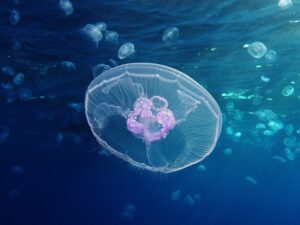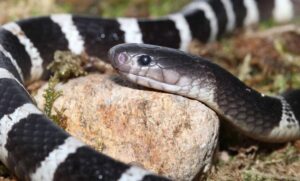The Axolotl, an amphibian found only in Mexico, can regenerate most of its body parts, from its limbs to its eyes, and even parts of its brain. If you’re a fan of this incredible creature, join KnowAllAnimals to quickly explore the 10 Interesting Facts About Axolotls in the following article!
1. What is an Axolotl?
The Mexican Salamander (Axolotl), also known as the “six-horned dragon,” is an amphibian found only in two lakes Xochimilco and Chalco near Mexico City and is nearly extinct.
- Kingdom: Animalia
- Phylum: Chordata
- Class: Amphibia
- Order: Urodela
- Family: Ambystomatidae
- Genus: Ambystoma
- Species: A. mexicanum
Although very rare, the incredibly cute appearance of the Mexican salamander has made it one of the most famous amphibians in the world. It has been the inspiration for characters in the world-renowned Japanese Pokemon series and in video games like Animal Crossing and Minecraft. It even appeared in a Google Doodle.
The Mexican salamander is so beloved that it is Mexico’s national amphibian and was featured on the 50-peso banknote issued in 2021.
With its small, smiling face and ruffled gills, the Axolotl is like the amphibian version of a “puppy.” This cuteness is because the Axolotl literally never grows up. Most salamander species undergo a metamorphosis from a fully aquatic larval form to a primarily terrestrial adult form.
However, the Axolotl is one of the salamander species that does not undergo this development. Instead, it retains all of its larval features external gills and a fin along its back and remains fully aquatic, but it is capable of reproduction. This is called paedomorphosis or neoteny, which is the retention of juvenile characteristics in the adult form.
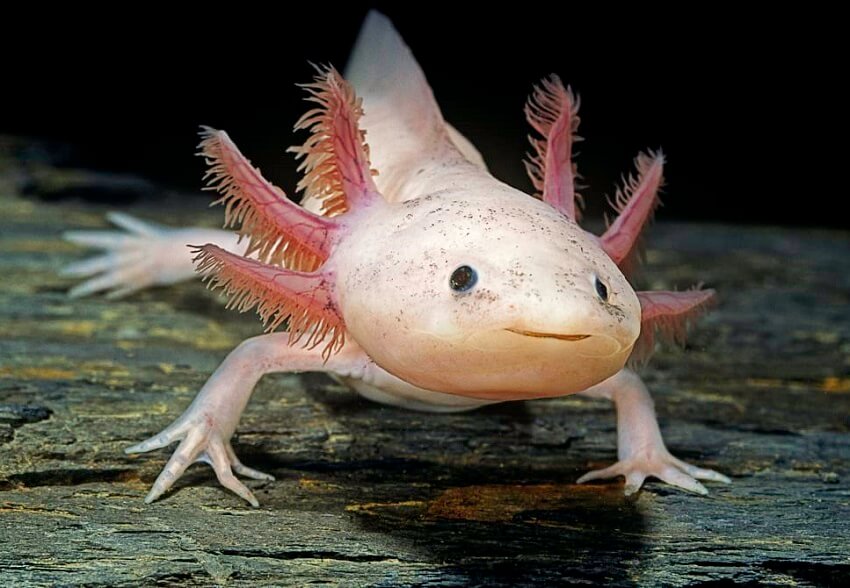
2. 10 Interesting Facts About Axolotls You Probably Didn’t Know
The Axolotl, also known as the “Mexican walking fish,” is one of the world’s strangest and most mysterious creatures. With its incredible regenerative abilities and unique appearance, this species always intrigues both scientists and animal lovers. Let’s explore 10 interesting facts about Axolotls that you may not have known.
2.1. Axolotl Means “Water Dog”
Axolotl’s scientific name is Ambystoma mexicanum. The name Axolotl comes from the Nahuatl language: atl means “water,” and xolotl means “dog.”
So, the name Axolotl means “water dog.” With its strange appearance and characteristics, the Axolotl is often kept as an exotic pet in people’s homes.
2.2. White Axolotls Are Rare
Axolotls are usually a shade of brown or black, and white ones are very rare. The white ones, known as “leucistic,” are a hybrid product of a male with a genetic mutation that was imported from France in 1803. The black ones grow up with green eyes, unlike the white ones, which often have red eyes.
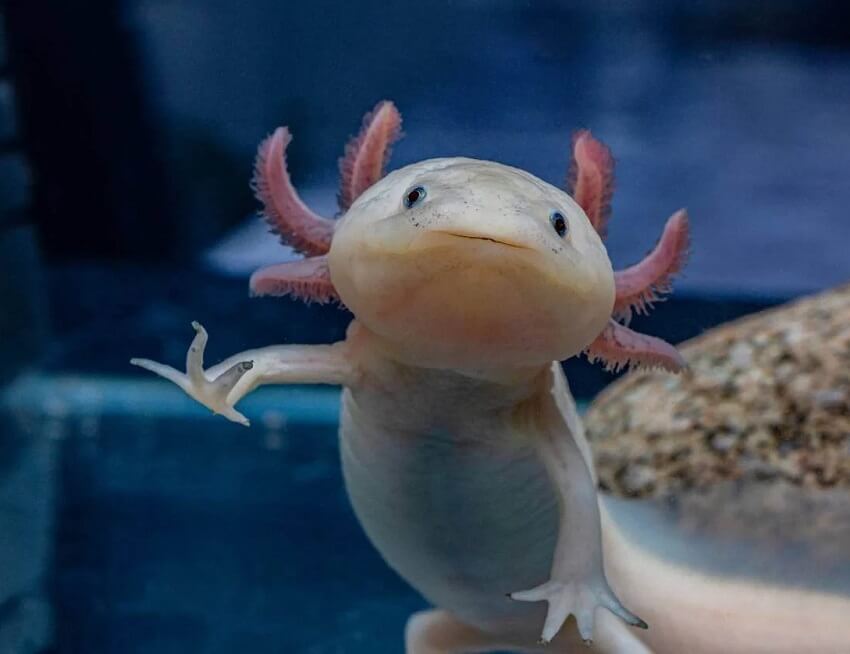
2.3. Axolotls Have Tiny, Invisible Hairs
The head of an Axolotl is covered in hair, but it’s very small and short, making it difficult to see. It also has soft spines that help with metabolism and aid in movement.
You can see Axolotls in aquariums and laboratories worldwide, but you cannot find them in the wild. They now only live in Lake Xochimilco, Mexico. Axolotls are very easy to keep as pets; they can eat small fish, worms, and anything else that gets close to their mouths.
2.4. Axolotls Are Endangered
Due to pollution, habitat loss, and invasion by other aquatic animals, Axolotls are increasingly at risk of extinction, despite their unique ability to regenerate their body parts.
To conserve the Axolotl, scientists have built habitats for them using reeds and rocks. However, the Axolotl population continues to decline. A 1998 survey counted about 6,000 wild Axolotls, but since then, scientists have very rarely found them. By 2014, biologists couldn’t find any at all. They may now be extinct in the wild, surviving only in artificial tanks.
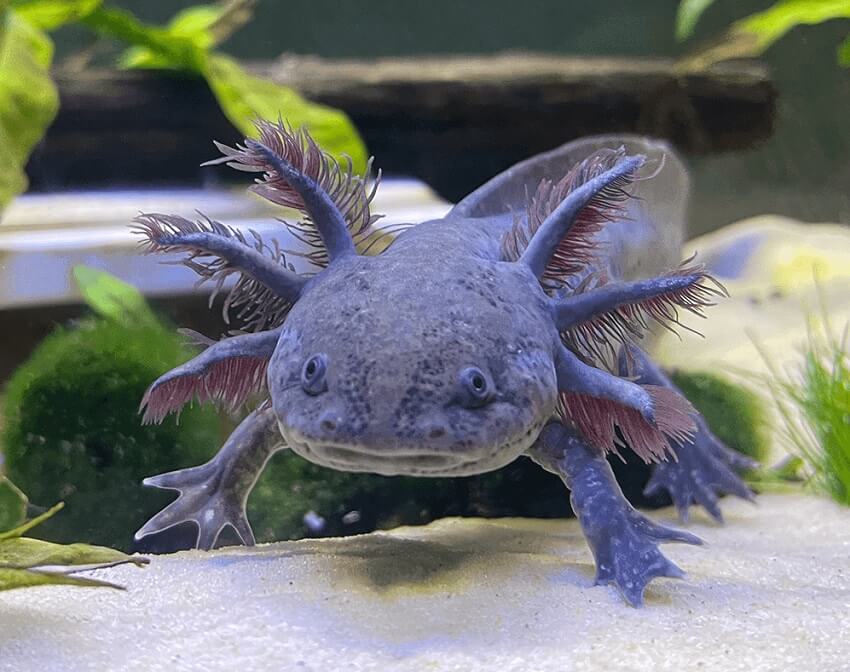
2.5. Axolotls Are Edible
When Axolotls were not at risk of extinction, Mexicans used to eat them with cereal. Some people describe the taste as similar to eel meat.
Today, if you want to try this unique salamander dish, you have to go to Japan. In Osaka Prefecture, there is a restaurant that specializes in dishes made from Axolotls, especially crispy fried Axolotls. The taste is like white fish meat, but with a slight crunch.
2.6. The Mythological Axolotl
In Mexican mythology, the Axolotl is the dog-headed god of evil, who guides the souls of the dead to the underworld. Some stories have been altered and merged with real events, but people believe that the dog-headed god transformed into an Axolotl to hide. This salamander-like creature was trapped in Lake Xochimilco and could not transform into a land-dwelling animal.
2.7. Axolotls as Larvae
A larva is a creature that does not change its characteristics upon reaching adulthood. In a few rare cases, they display youthful features in adulthood. The Axolotl is a prime example of this phenomenon.
They grow large but never fully mature. Unlike tadpoles and similar animals, they stay in the water with gills, even though their lungs are well-developed.
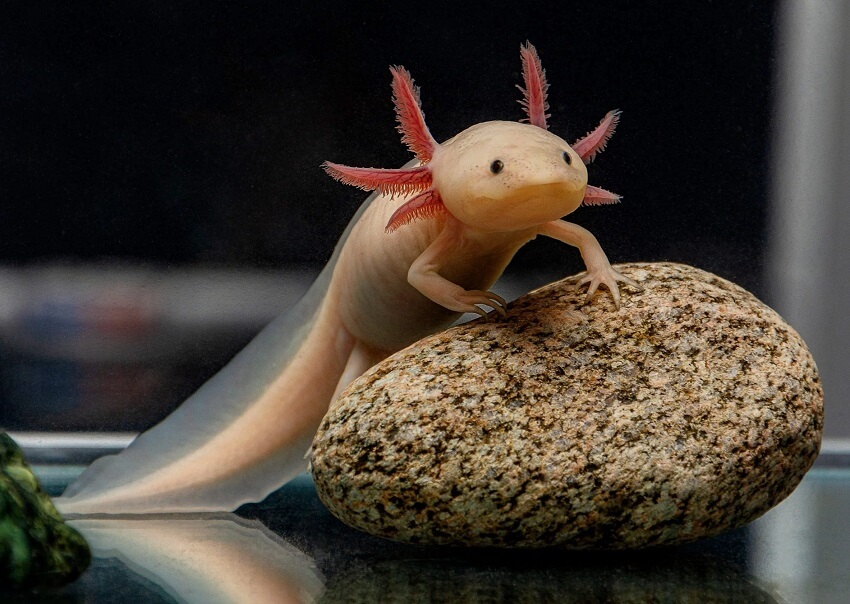
2.8. Axolotls Can Be Induced to Mature
One scientist successfully induced an Axolotl to mature by removing it from water. This caused its hormones to spike, leading to an unexpected growth spurt. The Axolotl became more like a tadpole but required continued specialized care.
Axolotls can change their living habits, but biologists advise against doing so to help preserve the species.
2.9. The “Fountain of Youth” of the Axolotl
The Axolotl has the ability to regenerate body parts, such as limbs, spines, and even its brain, without leaving any scars, as if it has the “fountain of youth.” You can cut off its spinal cord, its front and back legs, and it will regrow a perfect replacement without a trace. You could do it 100 times, and it would still grow back.
Scientists have even successfully transplanted body parts from one Axolotl to another.
2.10. Science’s Attempt to Decipher the Axolotl’s “Fountain of Youth”
In 2012, the Salk Institute for Biological Studies published two research papers on the Axolotl’s regenerative abilities in the hope of finding a mechanism that could be applied to humans. However, the research results showed that the Axolotl’s regeneration process is more complex than scientists had imagined. They fear that humans do not have the necessary genes for the regeneration process.
They are continuing their research in the hope that it will open up a new direction for treating people who need body part replacements in the future.
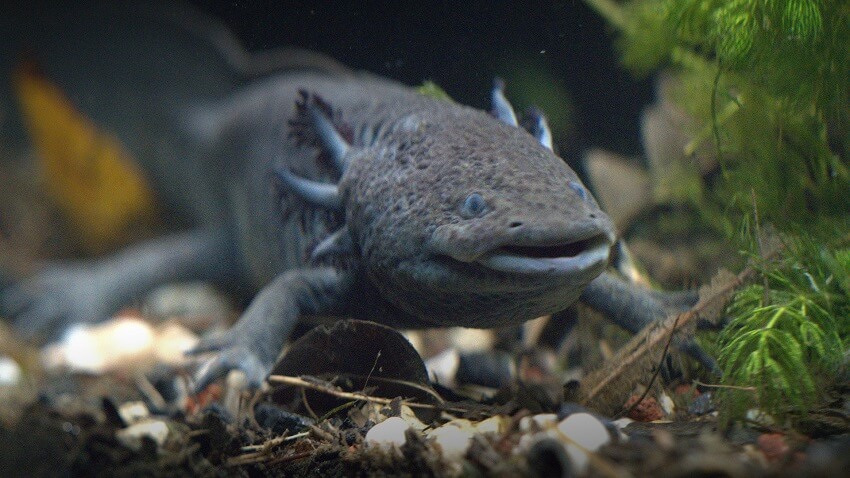
3. FAQs
1. What is the Axolotl, and how is it different from other salamanders?
The Axolotl (Mexican salamander) is an amphibian that lives only in water, retaining its larval features like external gills and a fin on its back even as an adult. It does not undergo metamorphosis to live on land like most other salamanders.
2. What does the name “Axolotl” mean?
“Axolotl” comes from the Nahuatl language, where atl means “water” and xolotl means “dog,” so the name is translated as “water dog.”
3. Why is the Axolotl called the “Caribbean sea monster”?
Because of its bizarre appearance, its retention of larval traits, its powerful regenerative abilities (of some body parts and even the brain), and its endangered status in its habitat, it has a mysterious look that is similar to that of a mythical sea monster.
4. Can Axolotls still be found in the wild?
The Axolotl is now virtually gone from the wild. They primarily exist in laboratories and aquariums. Some lakes, especially Lake Xochimilco in Mexico, are considered the last place where wild Axolotls might still be found, but their numbers are very low.
5. What is special about the Axolotl’s regenerative ability compared to other species?
The Axolotl can regenerate most of its body parts, such as its limbs, tail, and even parts of its brain, without leaving a scar. This is a rare ability in the animal kingdom, which is why it is studied so much for its potential medical applications.
4. Conclusion
The Axolotl, the “water salamander” with its unique appearance and extraordinary biological abilities holds many unsolved mysteries. From its name and morphology to its regenerative abilities and survival status in the wild, every aspect attracts human curiosity and a desire for discovery. Understanding the Interesting Facts About Axolotls is not only about opening a door to the wonders of nature but also a reminder to protect the habitats of species on the verge of extinction.


